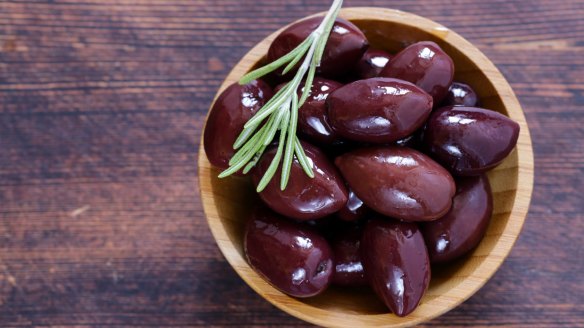How to preserve olives at home

Do you have a simple method for preserving olives? Dr. R. Sony
For the life of me I can't remember who taught me this. I think the exchange of information was done over some grappa, so whoever passed this method on, I thank you. It is a slow process that involves patience, lactic fermentation and possibly neglect. I take the olives when they are ripe, wash them then place them in one of those 10-litre buckets you can buy at the hot bread bakeries that dot the suburbs. The bucket must be clean. I top up with fresh water, whack an old heavy plate on top – I use a smoked-glass plate from the early 1980s so I can see what's going on underneath – to weigh the olives down. Some people swear it is essential to slit the skin but I wait until the olives are ripe enough for the birds to find them palatable. I leave the buckets in the shade outside and for two weeks I replace the water every day. When they're no longer bitter I drain the olives and place them in washed and sterilised 2-litre glass jars and cover with brine made with 100g salt to every litre of water. I pour the brine over the olives, covering them completely, seal them with a lid and leave them for six months to ferment. I use them straight from the jar or remove and serve them warmed with a little extra virgin olive oil and herbs from the garden.
I made baked beans with loads of late-season tomatoes and some molasses, but I can't get the beans to soften. N. Meath
Nothing worse than undercooked beans to bring on the brass section. I reckon you've got an acid problem. Beans are legumes. The starch in these does not soften in acidic or salty environments. Those late-season tomatoes are going to be quite acidic and there are calcium ions in the molasses, which also get in the way of the beans softening. Give the beans an overnight soak, then discard the soaking water. Making the cooking liquid less acidic by adding something alkaline, such as bicarb of soda, will help soften the beans but makes the beans taste soapy. Consider cooking the beans with the other ingredients such as onion, celery, carrot and stock, and when the beans are soft then add the more acidic ingredients and the salt. If not, then don't stand next to a naked flame.
I have a lot of basil left at the end of the season and I want to use it before the frost gets to it. H. Posner
Make pesto by grinding torn basil leaves in a mortar with a pestle with pinenuts, then adding grated parmesan and then mixing in enough extra virgin olive oil to make a paste. Put in a jar with the surface covered in oil and refrigerate. Make basil breadcrumbs by putting torn basil leaves in a blender with pieces of two-day-old sourdough bread and pulse until you have breadcrumbs. Place in a sealable plastic bag and store in the freezer for up to three months. Fry in butter and sprinkle over eggs, salads and pasta or use to stuff mushrooms. Take whole stems and hang upside in a warm dry place with plenty of airflow until the leaves are dried. Store in an airtight container and use in cooking over winter.
Send your vexing culinary conundrums to brainfood@richardcornish.com.au or tweet to @realbrainfood.
- More:
- Food
- Brain food
